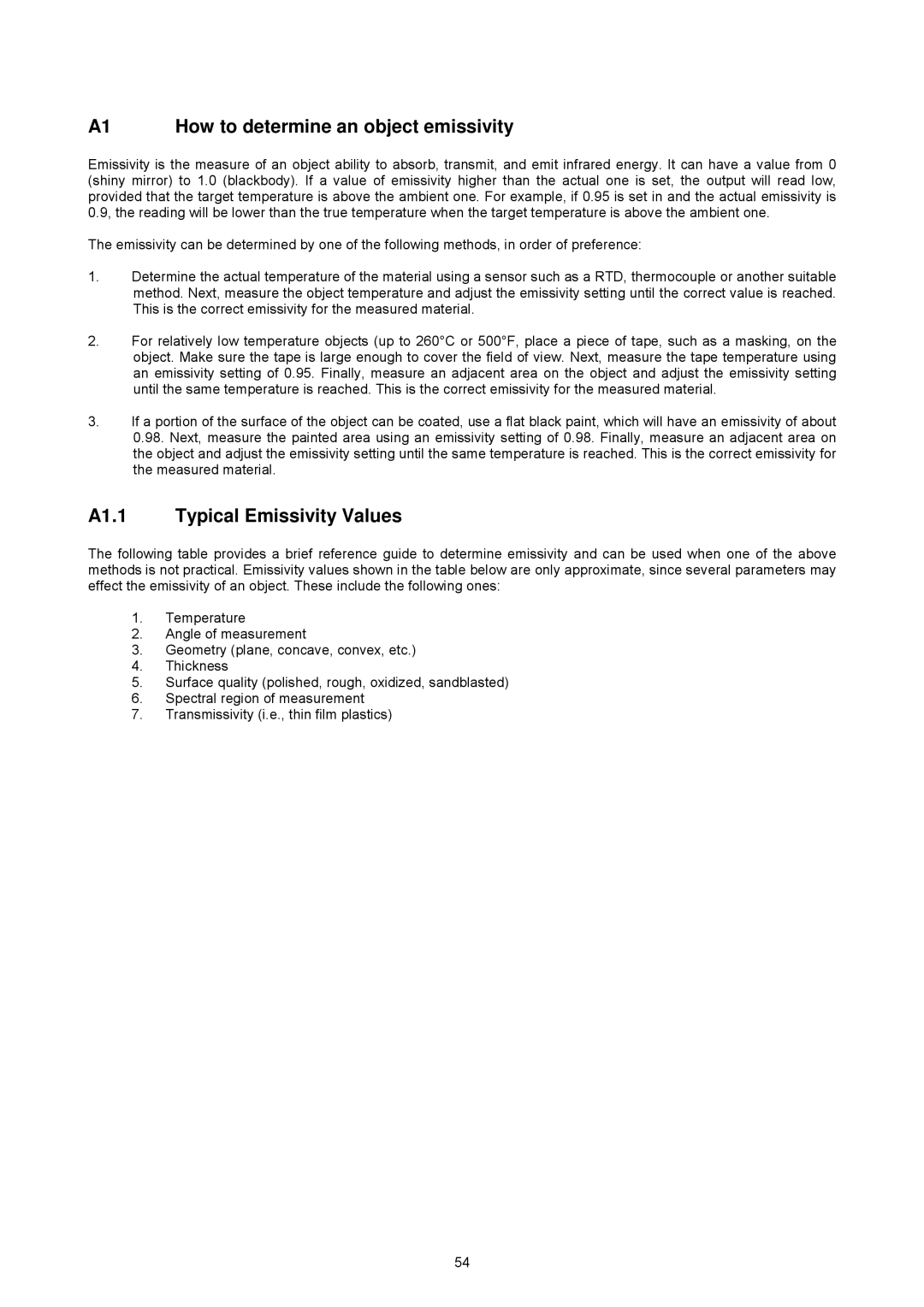A1 How to determine an object emissivity
Emissivity is the measure of an object ability to absorb, transmit, and emit infrared energy. It can have a value from 0 (shiny mirror) to 1.0 (blackbody). If a value of emissivity higher than the actual one is set, the output will read low, provided that the target temperature is above the ambient one. For example, if 0.95 is set in and the actual emissivity is 0.9, the reading will be lower than the true temperature when the target temperature is above the ambient one.
The emissivity can be determined by one of the following methods, in order of preference:
1.Determine the actual temperature of the material using a sensor such as a RTD, thermocouple or another suitable method. Next, measure the object temperature and adjust the emissivity setting until the correct value is reached. This is the correct emissivity for the measured material.
2.For relatively low temperature objects (up to 260°C or 500°F, place a piece of tape, such as a masking, on the object. Make sure the tape is large enough to cover the field of view. Next, measure the tape temperature using an emissivity setting of 0.95. Finally, measure an adjacent area on the object and adjust the emissivity setting until the same temperature is reached. This is the correct emissivity for the measured material.
3.If a portion of the surface of the object can be coated, use a flat black paint, which will have an emissivity of about
0.98.Next, measure the painted area using an emissivity setting of 0.98. Finally, measure an adjacent area on the object and adjust the emissivity setting until the same temperature is reached. This is the correct emissivity for the measured material.
A1.1 Typical Emissivity Values
The following table provides a brief reference guide to determine emissivity and can be used when one of the above methods is not practical. Emissivity values shown in the table below are only approximate, since several parameters may effect the emissivity of an object. These include the following ones:
1.Temperature
2.Angle of measurement
3.Geometry (plane, concave, convex, etc.)
4.Thickness
5.Surface quality (polished, rough, oxidized, sandblasted)
6.Spectral region of measurement
7.Transmissivity (i.e., thin film plastics)
54
